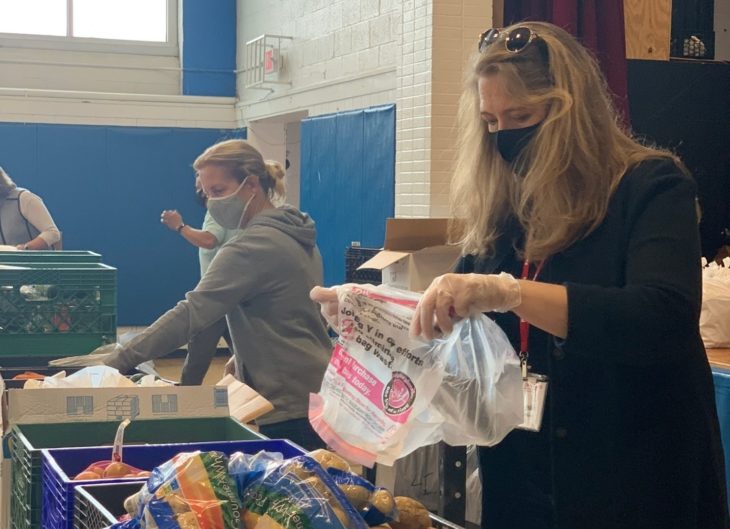
Published in Bloomberg
By Amanda L Gordon, December 10, 2020
How four of the wealthiest counties in the U.S. are adapting to deliver aid during a pandemic.
Feeding the hungry gets a lot of attention around the holidays, but this year food pantries began putting out calls for support on the day lockdowns began in March. The increase in need was compounded by social distancing measures, which meant forging new ways of giving and volunteering. We checked in on four areas in the U.S. where income inequality is particularly acute.
Lower Fairfield County, Conn.
At Person-to-Person, located in a county that contains eight of the top 100 wealthiest ZIP codes in the U.S., the number of volunteers is down 33%. Retirees and older adults normally make up the bulk of them, but this is as an at-risk population, so many have been stepping back, perhaps permanently. College students and furloughed workers have filled part of the void, powering a new free-delivery service: More than 200 volunteers made 744 door-to-door deliveries to provide about 40,000 meals in October. “We had to pivot,” says Nancy Coughlin, chief executive officer of Person-to-Person.
Early on, supply chain issues pushed food costs up 145%, from $11,000 to $27,000 a month, but fundraising efforts have met the additional expenses. The biggest budget increase has been for emergency cash assistance to help pay rent and electricity bills: It’s gone from $35,000 a month before Covid-19 to as much as $144,000. The end-of-year campaign has a goal of $1.4 million, up $400,000 from last year. One of its fundraisers this month has been altered due to pandemic restrictions: Instead of getting to visit with Santa Claus at a party, families can arrange to have him drive by their homes on a fire truck.
Summit County, Utah
The Christian Center of Park City is serving 1,000 people a week using drive-through pantries it operates on every day but Sunday. Last year, no more than 15 families a month would apply for cash assistance in the tourism-reliant locale; this year the number has risen to 1,300. So far, the CCPC has distributed almost $1 million in rent aid.
The community has contributed more than $2 million, and there’s been a 40% increase in new donors. Money given to CCPC through the Park City Community Foundation, where many affluent families set up donor-advised funds, approached $500,000. CCPC also administers the Most Vulnerable Fund, which was started in late March by three friends to help restaurant and service workers who had lost jobs in Summit and neighboring Wasatch County. About 100 people have participated, bringing in more than $220,000.
Click here to read entire article on Bloomberg Businessweek
